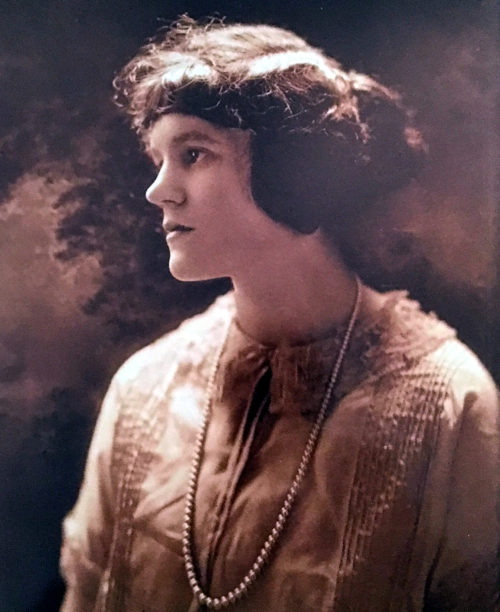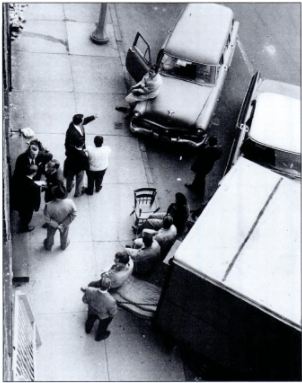The Last West Enders
The history of urban renewal in the West End is well-known, and locals are familiar with names of the “last West Enders” who refused to leave their neighborhood. As the aftermath of urban renewal lives with us today, there are a few ways to look at “the last” of the old neighborhood.
Urban renewal drove West End residents from their homes over the course of eighteen months from 1958 to 1959. The city of Boston claimed the entire neighborhood by eminent domain, declaring the West End a “blighted area” in 1953; and then proceeded to demolish the tenements occupied by the West End’s diverse immigrant-descendant communities. By the spring of 1960, 379 Charles Street was one of the last homes to survive, standing only a few blocks from the Elizabeth Peabody House. Its resident, Elizabeth Kearney Blood, emigrated from Ireland at the outbreak of World War One in 1918, and married John Blood from Newburyport. In May 1960, Blood and two of her daughters, Elizabeth McCormick and Dorothy Eastman, protested their removal from the West End. They attempted to block entry into their well-maintained home after movers took the front door from its hinges, and otherwise made their presence felt: Elizabeth Blood would eventually sit on the hood of her car and watch as movers carted away her possessions. The second issue of local newspaper The West Ender (May 1985) remembered Blood for her determined resistance to displacement. Because of her efforts, lawyer Endicott Peabody – later governor of Massachusetts from 1963-1965 – negotiated an extension of Blood’s ‘right of occupancy’ by a month.
Just across from the West End Museum, the “last tenement” of the West End remains at 42 Lomasney Way. Once home to more than 40, in the 1970’s it was occupied by John and Rose Swietlikowski, Polish immigrants who lived in the neighborhood with their many children for fifty years. Part of the North Station urban renewal project area (as opposed to the more famous West End project area), some speculate that the building was saved from demolition through the influence of the Mafia, as the property was purchased in 1972 by William ‘Skinny’ Kazonis, an associate of New England mob boss Gennaro Angiulo. The tenement at 42 Lomasney Way has continued to defy the odds, and remains standing in spite of new city developments which could have demolished it, from Green Line construction to the Big Dig.
Until as recently as 2010, West Ender Joseph Cristolli, who lived on Minot Street until urban renewal began, owned the building at 313 Cambridge Street. He rented five apartments out of the building and lived on the top floor, until the property was bought by Massachusetts Eye and Ear next door. In 2010, a travel agent whose office then resided on the first floor of the building told an MIT student researcher that Joseph Cristolli, known by some locals to be the last West Ender, was determined to “live and die” in the West End before circumstances forced him to move to Woburn.
There are many stories, written or remembered, of the people whose resolve to hold onto their community made them the “last West Enders,” and their memory calls out to us from the few physical remnants of the old West End today.
Article by Adam Tomasi
Source: The West End Now (MIT, “The Once and Future City,” Spring 2010); Boston.com; Review of The Last Tenement exhibit; The West Ender; Boston’s West End by Anthony Sammarco; Daily Mail; Century 21” Cityside









